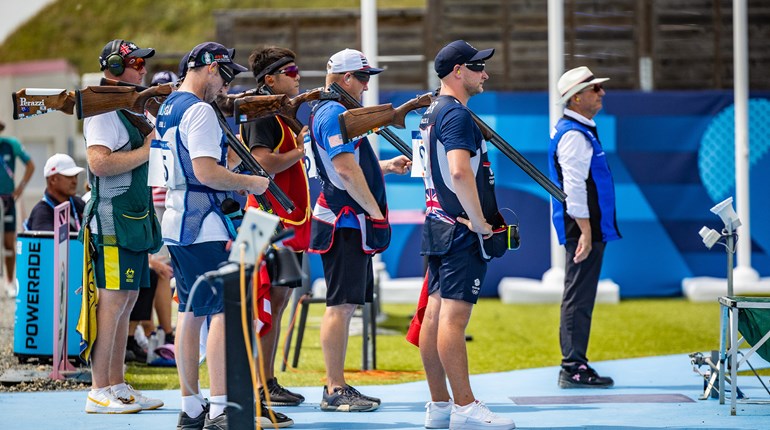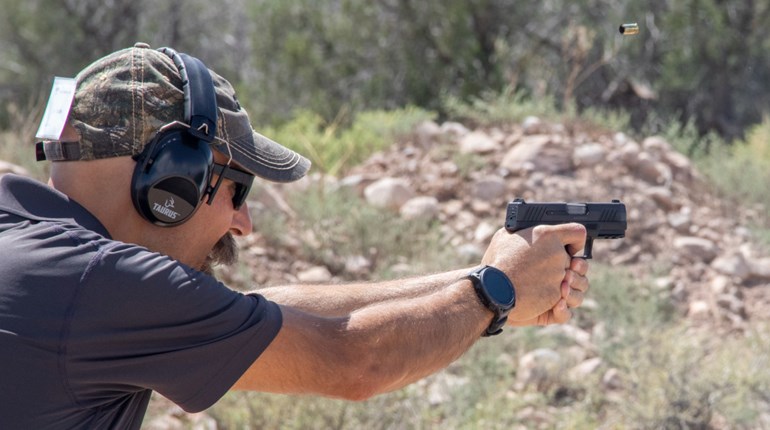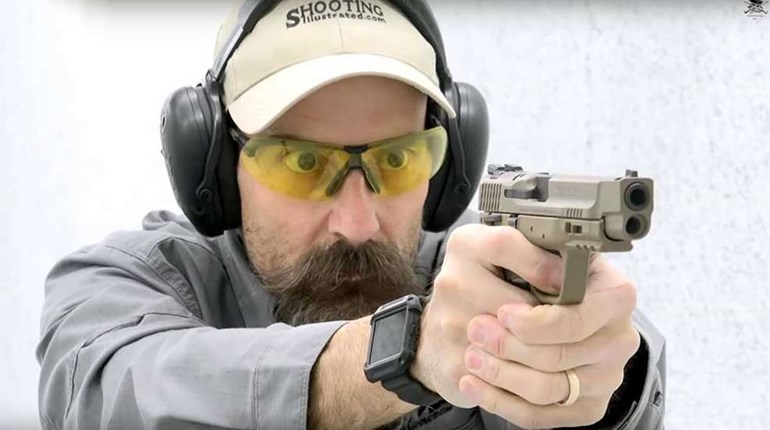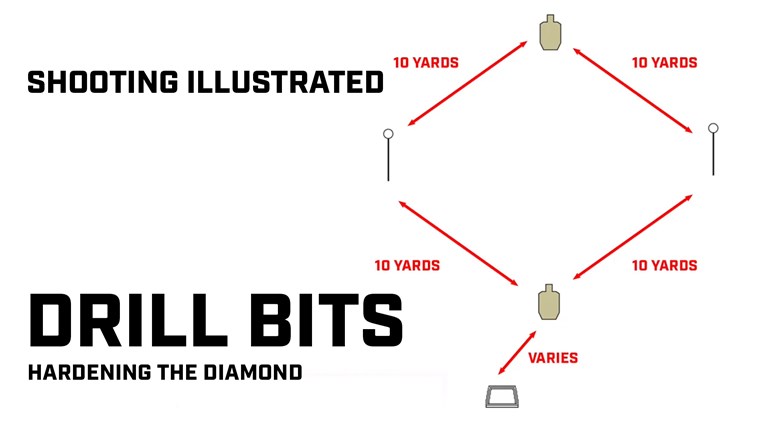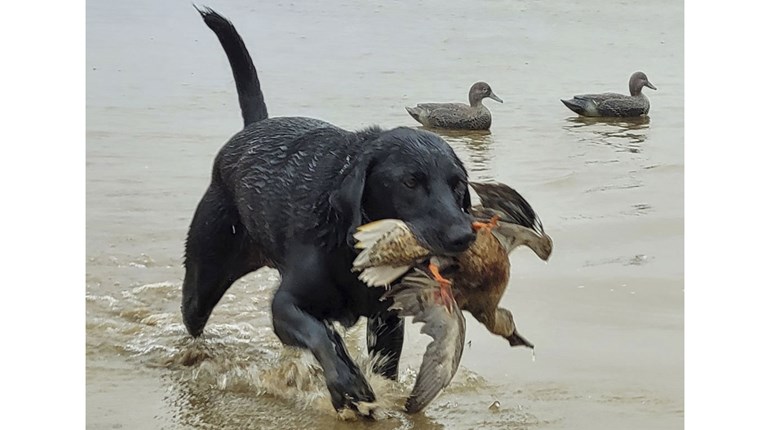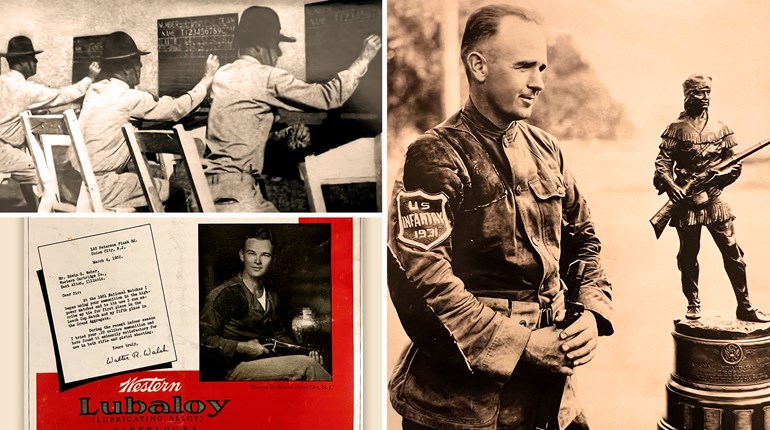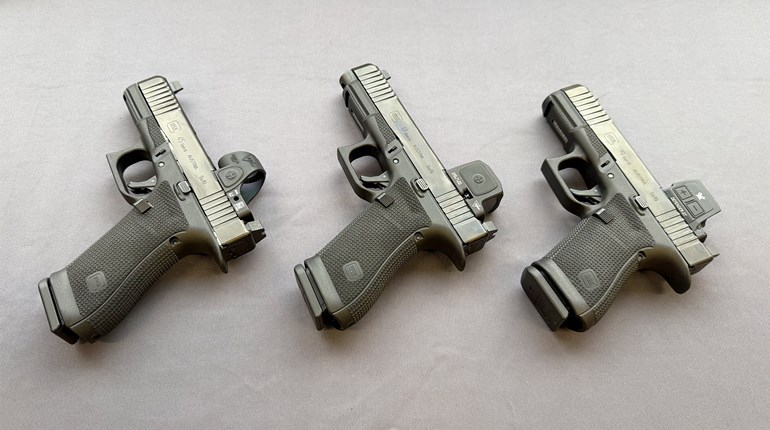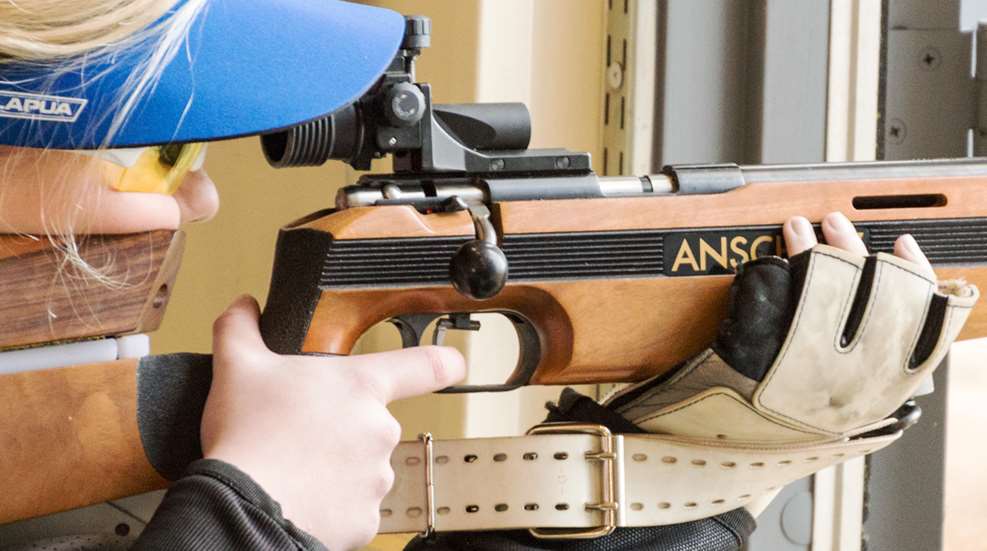
From the October 2004 issue of Shooting Sports USA.
Squeezing the trigger—the moment of truth—is the essence of every shot. Do it right, and you’ll succeed. Do it wrong, and no matter how good everything else was—breath control, grip, stance and sight picture—the shot will not find its goal.
You may think pulling the trigger amounts to little more than a small contraction of the muscles of the index finger. And yet, there’s much more involved: the trigger lever, mechanism and pressure, as well as your technique, mental game, information processing and psychology.
The Trigger
The link between the finger and the firing of the shot is the trigger itself. Nearly all competitive rifles and air guns in use today have some type of trigger adjustment, so it is helpful to understand a few basics.
The trigger lever is often adjustable either forward or backward. This adjustment is made based on shooter grip—when correct, the trigger finger should be at a 90-degree angle to the line of the barrel so the trigger pressure is applied parallel to the barrel.
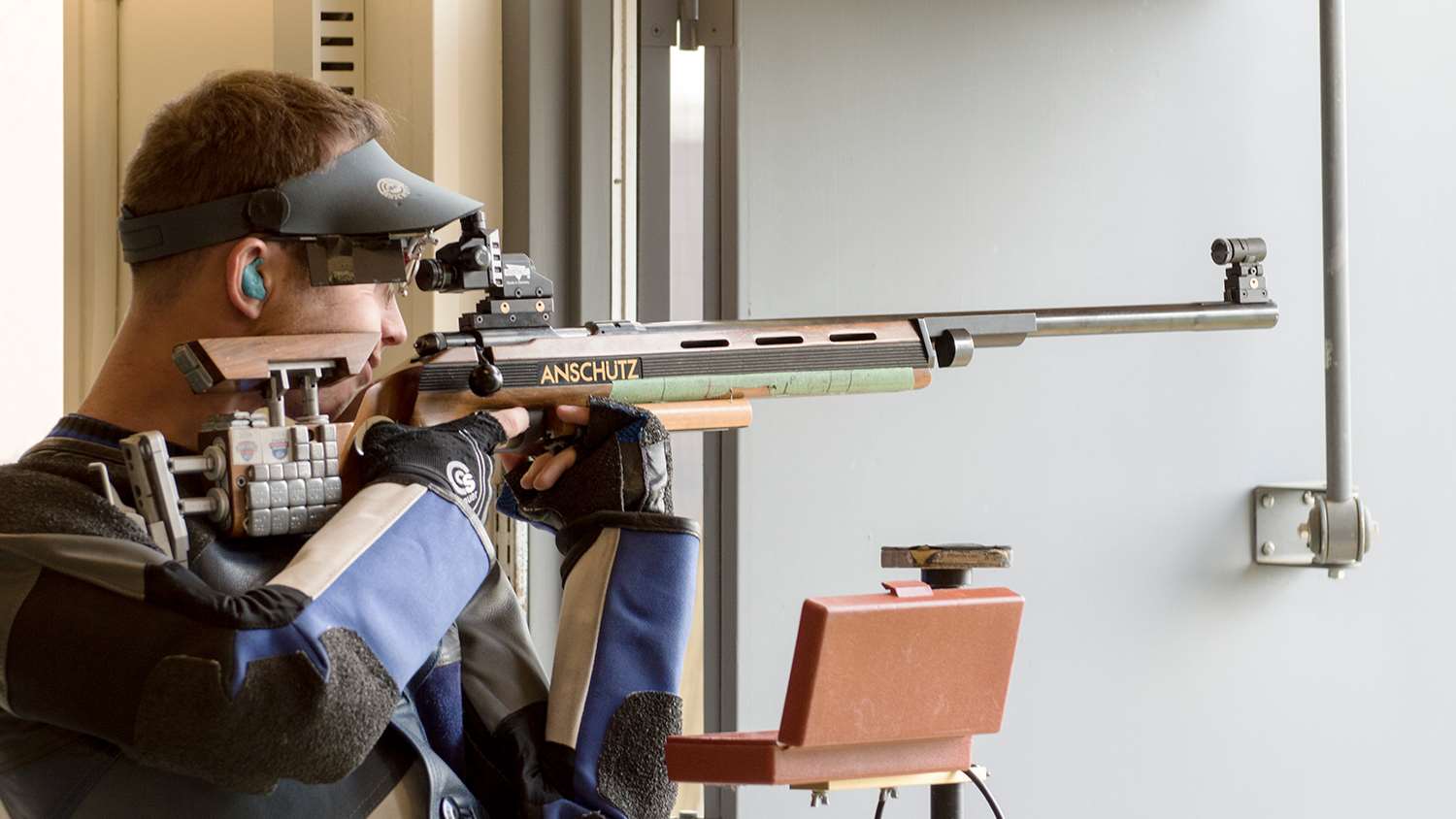
Think of the trigger as a simple mechanical lever. The resistance that must be overcome to fire the shot depends where the finger is placed on the trigger. Placing the finger high increases the pressure needed to fire the shot, while placing the finger low on the trigger will increase the mechanical advantage of that lever and make the trigger feel lighter. Thus the shooter must always place the finger in exactly the same spot to get a consistent feeling.
Trigger width can also change the way one trigger feels over another. A wide trigger spreads pressure over a larger area, making it feel like it takes less pressure to fire the shot. One of the risks with wide trigger shoes is that more pressure may be applied to one side or the other causing lateral displacement of the gun.
Another factor is curvature. Curved triggers can help the shooter place the finger in the middle of the trigger. Straight triggers may have a small clip or marking point that can help the shooter place the finger on the same spot for each shot. The triggers on many rifles are replaceable, so you can choose one that suits you.
The Trigger Mechanism
Most factory-produced target rifles arrive equipped with a two-stage trigger. This kind of trigger has a certain amount of movement, or travel, that must be taken up before a second stage is reached. When the second stage’s resistance is reached, the shot is fired. There are some characteristics of this kind of trigger you need to know to make it fit your shooting style.
The first stage should not be very long. It shouldn’t take much time or allow the finger position to change much during movement. It should have the same resistance throughout its travel and never stick before the second stage is reached.
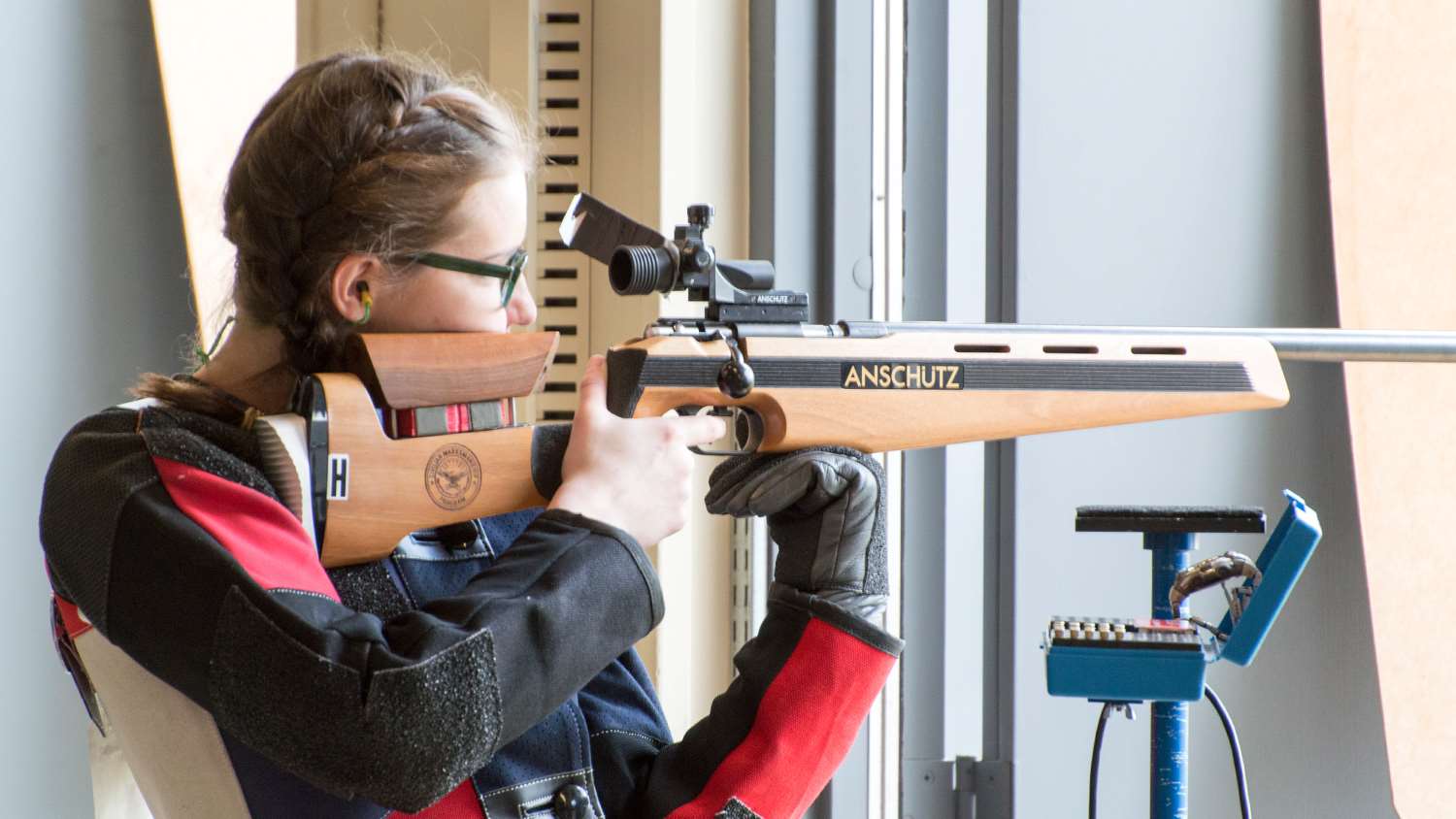
The weight of the first stage is important to the overall feel of the trigger. For example, if the first stage is 50 grams, and the second stage is 100 grams—a typical factory setting in smallbore or precision air rifles—once the second stage is reached, only 50 grams more pressure is needed to fire the shot. In other words, pulling the first stage has already taken up half of the pressure, and only the remainder needs to be applied for the shot to break. The resistance of the second stage can also be adjusted, but keep the resistance of the first stage in mind. What you feel as the pressure to fire the shot is really the extra pressure needed after the first stage in order to overcome the second.
The best triggers will have absolutely no play once the second stage is reached. Shooters call this a “clean break” of the trigger. If the trigger can still be moved slightly without releasing the shot, you have trigger creep. This condition can irritate a shooter, causing off-call shots and is usually caused by incorrect adjustment or mechanical wear. Regardless, you need to have it adjusted or fixed before you start to doubt your shooting abilities.
The other kind of trigger does away with the first stage completely and the shooter applies pressure until the full resistance is overcome. This is sometimes referred to as a direct trigger, since the next movement after the finger makes contact with the trigger will release the shot. Creep in this kind of trigger is also frustrating to good shooting and should be remedied.
Some shooters have problems initially with the single-stage trigger because they are afraid of touching the trigger before they are ready. But with a little practice they soon get used to touching the trigger a little more carefully. An advantage of the single-stage trigger is that it can save time and energy, since there is no first stage to take up or rush through in a high-stress moment—you are ready to go, right away. But some rifles cannot be safely converted to single-stage triggers. Some air rifles, in particular, can accidentally discharge during loading if the trigger is not adjusted properly.
Setting Trigger Pressure
How should the trigger be set? As always, this depends on personal considerations, so everyone has to find their own ideal solution. There are some hard-learned lessons you may find helpful.
First off, know your trigger. You should become familiar with all possible adjustments by reading and learning your gun’s manual. Try different settings in practice, and develop a feel for your trigger.
Second, test your trigger in a match. What works in a low-pressure practice situation may not be right in competition. If you have ever pulled through both stages of a two-stage trigger in a match, you might consider a single-stage trigger. Also, if you are a 3-position shooter, adjust the trigger so it suits your most unstable position—usually standing for most shooters.
Trigger pressure and grip pressure are related. If you hold too tight with the grip hand, the trigger finger won’t be as sensitive to pressure. Make certain you can feel the trigger pressure with your normal grip.
If you shoot in cold weather, you might consider raising the trigger pressure, since you lose sensitivity in your finger as the temperature goes down.
Developing Your Trigger Technique
The trigger hand has several functions. It is a very important contact point between the shooter’s body and the gun’s stock that helps hold and support the gun. That makes it important for the steadiness and balance of a shooting position, but its main function is to place the trigger finger in the ideal position on the trigger. The grip must be the same for each and every shot—the same placement, with the same firmness. The trigger finger must be placed on the trigger in the correct location, and its movement must be directly in line with the barrel and the line of fire, shot after shot.
There are some requirements we should expect from a good trigger pull. It seems as if it should be so simple—just a small bend in the finger—but it’s deceptive. We want it to be consistent, in a precise direction, accurately applied and perceived, as well as fast.
Mind Games
So far we have looked at the physical, technical and mechanical aspects of pulling the trigger. Now we consider the mental part of trigger pull—how to pull the trigger at the right time and in the right way to improve your chances of hitting the middle of the target. And maybe we can answer the question of why a four-ounce trigger pull sometimes feels like four pounds.
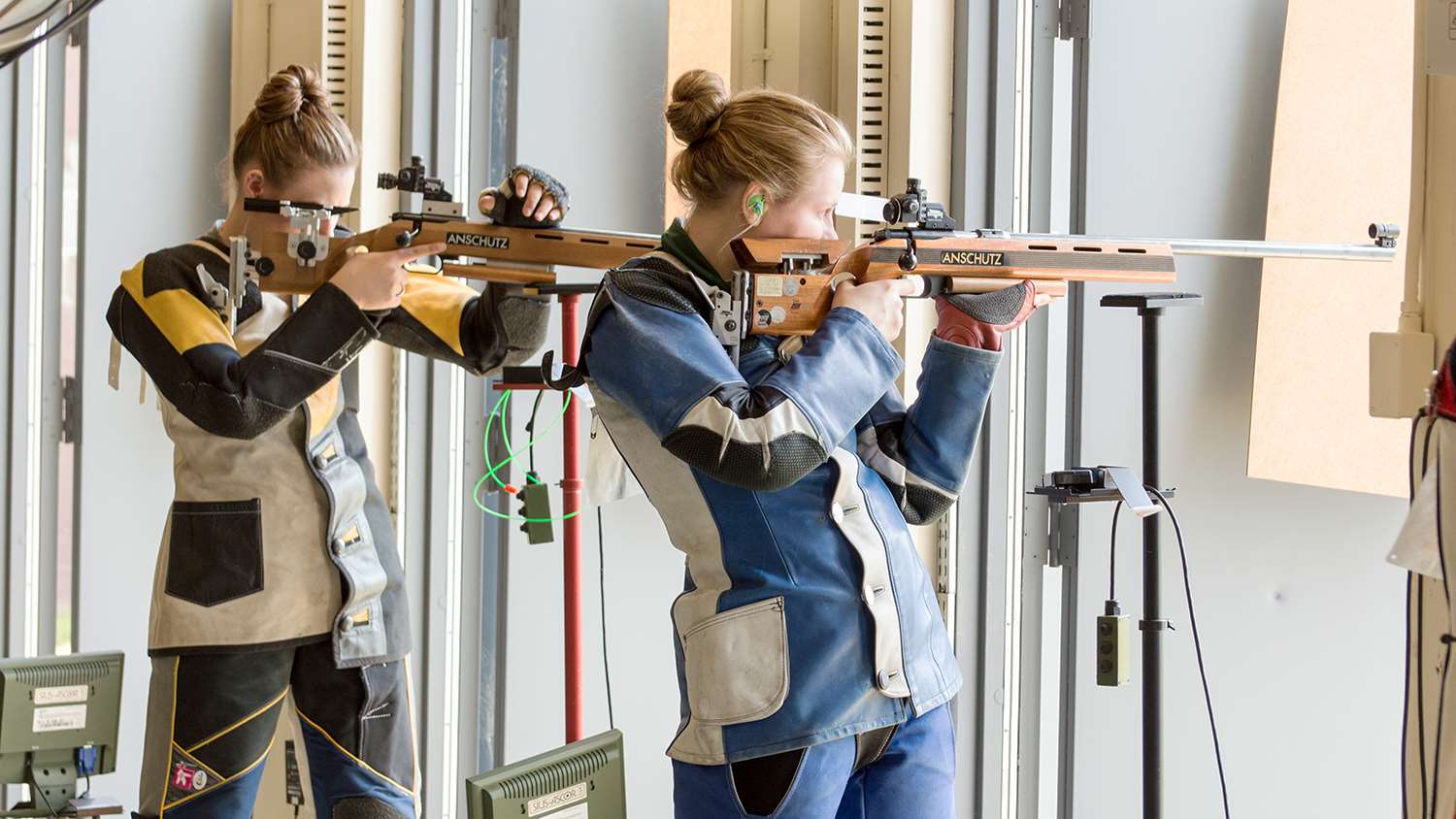
All the information about the shot, sight picture, movement, muscle tension and trigger pressure comes together and is controlled in the brain. When the decision to shoot is made, it is put into action instantaneously. The correct decision can only occur when you have received and assessed the relevant information. So trigger release really happens in the gray matter of your brain cells. We can think of shooting as a type of data processing exercise done by a very fast computer. But the right output can only happen when the correct data is input and processed by a correct program.
What kind of information is presented to the shooter through his or her senses? First, and most obvious, is the sight picture, the position of the front sight element in relation to the target as seen through the rear sight aperture. The shooter can see the errors of the actual picture versus the ideal, as well as the movement characteristics and speed. Some other considerations may include changing light or wind conditions.
After the shot is fired, the eye also provides information on the movement of the muzzle and the sight picture on follow through. This information is critical to evaluating the shot, the natural point of aim and the quality of the position.
Just like the eyes, the ears also get a constant flow of information during the shooting process. In a competition, for instance, there are the sounds of the other shooters and, in the background, spectators and range officials. All this is really white noise that carries no useful information to the shooter about the current shot.
The third path of information input is touch. Your body is covered with sensory nerves that detect temperature and pressure. The most important feeling is, of course, the position and pressure of the finger on the trigger. There is other information concerning pressures that must be checked such as the gripping-force of the trigger hand, the butt plate to the shoulder and the head to the stock.
Processing the Data
Even today’s fastest computers would overload if they had to handle the amount of information our brains receive. Yet psychologists tell us the brain can really only consciously process a small stream of information.
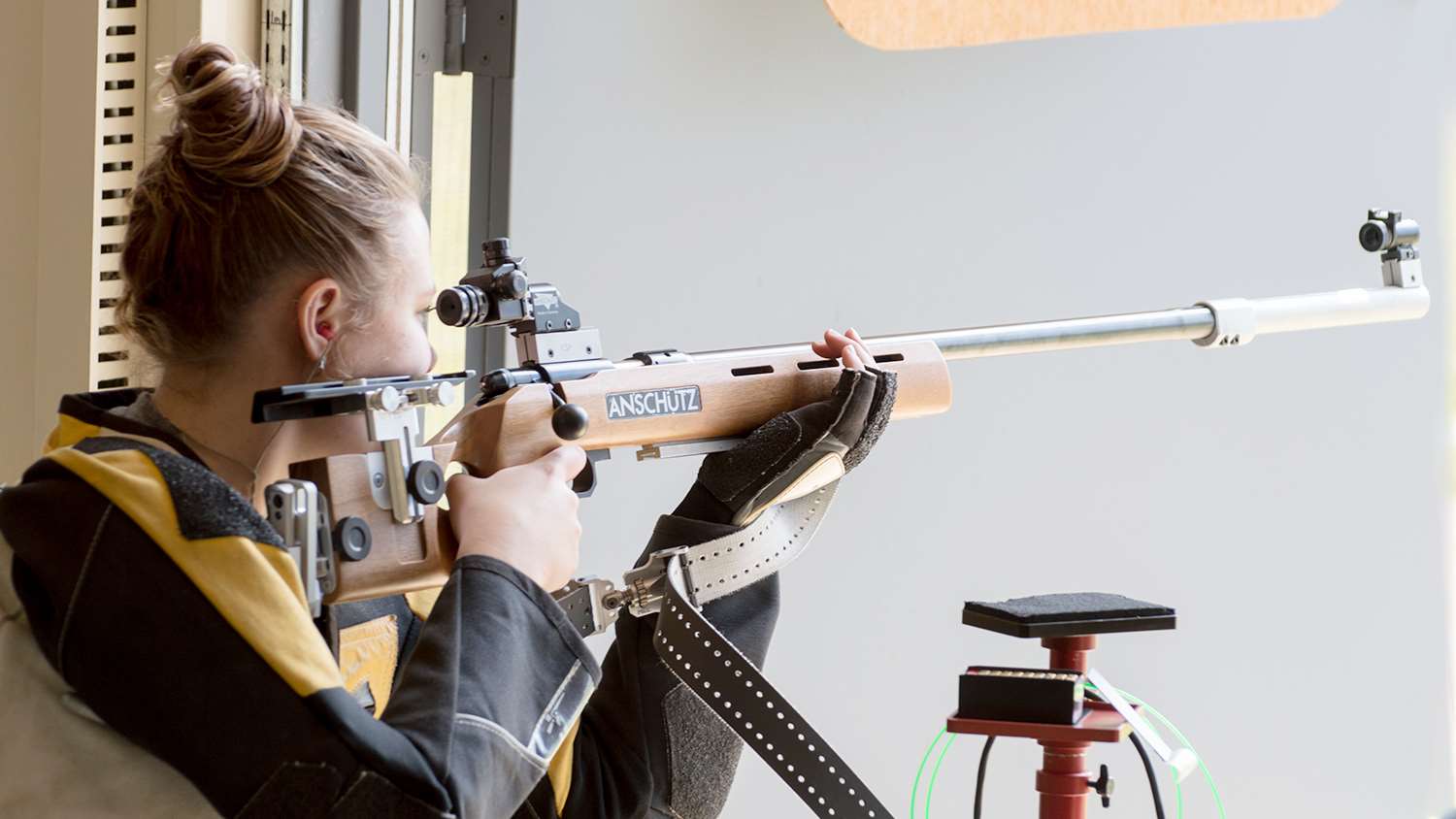
The human nervous system has developed to deal with this constant flow of information, handling the vast majority of it with the autonomic nervous system. You breathe normally without thinking about it, even while you sleep. Digestion, circulation and many other body processes are controlled in the same manner. Through training, the body and mind adapt to the point that it can handle the demands of shooting at the unconscious level.
The second strategy is focusing on the most important information at the right time. In the final stages of the shot, the shooter should be concentrating on the ring of light between the aiming mark and the front-sight ring. After sufficient training, when that ring of white is right, the shot seems to fire itself. It takes regular and systematic training to develop and refine the distinctions between what is and is not important. The beginner will not recognize the small errors that a more advanced shooter would not accept.
Another method to help in the data-flow problem is to deal with it sequentially. These three strategies form the basis for the shot plan. This process of firing the shot is a work schedule, in which all the necessary information gets checked off in order. As long as everything is right, each step follows until the shot is fired.
To deal with the information flow, develop a shot plan. Next time you’re at the range, make a list of all the thoughts and observations that come into your head while you are shooting. Try to list every single item.
Categorize these thoughts. Underline those directly related to the control of your performance: sight picture, muscle tension, grip, and so forth. Draw a box around thoughts that concern the outcome. Everything left over has nothing to do with shooting and just clogs the pathway. These are the “bad” thoughts.
Evaluate the categories starting with the first group. Think about what is absolutely necessary, and how much time and effort should be devoted to each thought. Arrange them to make a script for a single shot. This is the starting point for your shot plan. The thoughts in the boxes are next divided into groups: those that are positive or motivating in nature, and those thoughts indicating fear, anger, doubt or other negatives. These thoughts are the reason the trigger sometimes feels so heavy.
The next step is to censor your thoughts, allowing only those that are positive, motivating and constructive. Whenever you catch yourself having negative thoughts, interrupt them immediately. Some shooters visualize a big “STOP” sign to terminate the unwanted thoughts and replace them with something positive.
Organize your positive performance thoughts systematically by developing and refining your shot plan or program until it becomes automatic.
The Psychology of Trigger Release
When you shoot, you receive and process not only sensory information but also the thoughts in your own head, which can influence your shooting results. These thoughts are generally unrelated to your sensory input—things like what happened at work today or what you need to do tomorrow.
These thoughts not connected directly to the successful execution of the shot prevent the shooter from thinking about the job at hand. Important information is no doubt lost, and the danger of making a poor decision is increased. So if you are seized by a vision of winning a gold medal while checking your natural point of aim, you will miss important feedback on how your body feels. Without this full attention, the risk of missing the shot increases. You need to learn the difference between useful and useless thoughts and control them.
You’ve probably noticed I haven’t been specifically addressing the trigger in a while. That’s because if you concentrate on the right things at the right time in the correct sequence, trigger problems will disappear all by themselves. If the sequence of thought and focus is unbroken, there is no room for doubt or error to creep in. The development and implementation of a systematic shot plan will take a lot of work, but it is the only way to improve consistency in your thoughts and actions that the will lead to success. Follow your shot plan.













